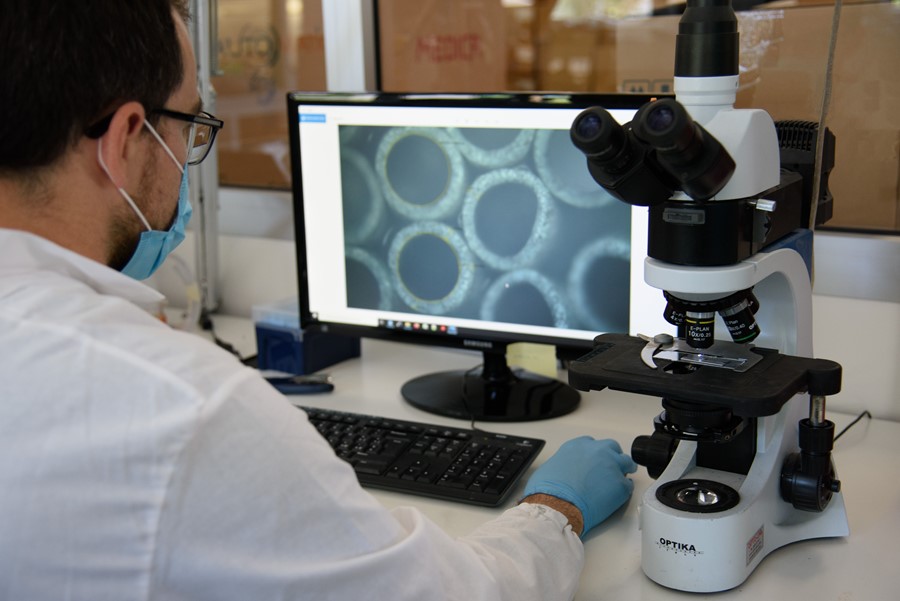Graphene applications: GRAPHIL
Graphene Flagship Spearhead Project GRAPHIL targets an urgent market and societal need; the removal of toxins and contaminants that are increasingly present in European water sources.
With Graphil’s new graphene-based water filtration technology, in-line water filtration has never been easier. This is the future of water filtration at home.
Many countries around the world do not have consistent access to safe drinking water in their homes, and billions of people rely on bottled water. The Graphil water filter can be fitted at the point of use to guarantee in-line access to clean water, wherever it is needed.
Millions of hollow fibers made of a composite of graphene oxide and polysulfone are tightly woven together into a membrane which works as the filter. There are millions of small holes between the fibres – just five nanometres in size, twenty thousand times thinner than a sheet of paper. The holes between the fibres act like a mechanical net, trapping dirt and particulate matter, as well as viruses, bacteria, and toxins due to their physical size, allowing clean and safe water to pass through.
Graphene oxide’s strong chemical affinity to these contaminants makes the polysulfone fibres more effective at filtering out unwanted material. The membrane also filters out antibiotics, heavy metals, and PFAs, and many more contaminants, to ensure a steady flow of safe water.
Installing a Graphil filter at home will make tap water more reliable, allowing people to drink and cook with clean water where it may otherwise not have been possible. This will bring significant cost-saving benefits to the end-user. The filters can also help to reduce the consumption of plastic bottles, working towards a more sustainable future.

Graphene oxide’s strong chemical affinity to contaminants makes the polysulfone fibres more effective at filtering out unwanted material. The membrane also filters out antibiotics, heavy metals, and PFAs, and many more contaminants, to ensure a steady flow of safe water.
These filters act like a mechanical net, trapping dirt and particulate matter, as well as viruses, bacteria, and toxins due to their physical size, allowing clean and safe water to pass through.




